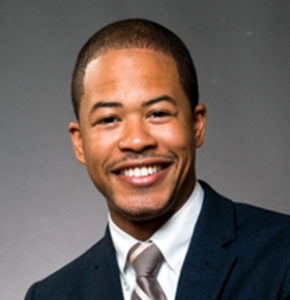The realities of racial, economic and gender injustice exposed by the COVID-19 pandemic began to fade from consciousness only a year later, according to researcher Eileen Campbell-Reed.

Eileen Campbell-Reed
During the first two years of the coronavirus outbreak, the Baptist theologian and author interviewed and surveyed more than 100 ministers and lay leaders on topics such as stress and self-care during the lockdown, parenting and pastoral life amid crisis and navigating partisan divisions over vaccines, mask wearing and returning to in-person gatherings.
The first round of research revealed that many lay and ordained leaders had been awakened to the systemic nature and severity of racial and economic injustice by widespread police brutality and subsequent uprisings in 2020, she said. “White leaders were activated by what they were listening to, and they were talking to their congregations about that.”
“White leaders were activated by what they were listening to, and they were talking to their congregations about that.”
But that focus and intensity have since begun to ease, she said. “In 2021, we interviewed a different group of pastors and lay leaders, and we heard far less about the multiple pandemics we have been living with. That is a call to us that we must continue to pay attention to our role and our privilege in the world.”
Research overview
Campbell-Reed used a Sept. 1 webinar to explain these findings and discuss the full report now available from the 22-month qualitative study of lay leaders and pastors from more than 20 denominational affiliations she conducted with Christian Scharen, vice president for research at Auburn Seminary in New York.
 On the webinar, Campbell-Reed was joined by Baptist, Disciples of Christ, African Methodist Episcopal and Presbyterian ministers whose experiences illustrate certain aspects of the 28-page report. Good Faith Media CEO Mitch Randall moderated the session.
On the webinar, Campbell-Reed was joined by Baptist, Disciples of Christ, African Methodist Episcopal and Presbyterian ministers whose experiences illustrate certain aspects of the 28-page report. Good Faith Media CEO Mitch Randall moderated the session.
She boiled the issues down in a pastoral letter included in the report: “During the last two-plus years, change in the church has been accelerated. All the usual challenges of life together in a faith community were amplified and made more complex by COVID-19 measures and the multiple pandemics that were revealed in this season. Grief and loss are widespread and emotional toll cuts deep. The direct loss of more than a million lives is only the tip of the iceberg. We need healing and new future stories.”
“We have entered in a new era of ministry … and that means a new time for the church.”
One of the top changes identified in the research is that the church is living in a new age, she said during the webinar. “We have entered in a new era of ministry … and that means a new time for the church.”
Some of that is due to the high number of deaths, job losses and cancelations of traditional patterns of worship and fellowship that affected many congregations during the early phases of the pandemic, she said. “We lost so much during this time. That’s across the board.”
Hybrid worship and resiliency
The new age ushered in by COVID-19 will include a permanent place for online gatherings and constant adaptations of technology, she added. “Hybrid worship is not going anywhere. The tiniest little churches are still livestreaming and having virtual worship. That means pastors and all worship leaders need to be prepared to lead in a hybrid environment, and that takes a whole lot more skill.”
“Churches should be prepared to operate in a world defined by a continual state of crisis.”
In fact, churches should be prepared to operate in a world defined by a continual state of crisis, including from future pandemics and climate change threats, she advised. “We have to continue to adapt how we live in that world and learn how to be present with each other in crisis.”
But through it all, many pastors and lay leaders showed resiliency during the pandemic, the report says.
“Pastors spent a lot of time improvising their ministry tasks in unexpected ways. But they were certainly not the only ones. In the first place, lay leaders volunteered their time and technical skills to move church meetings and worship online and to expand the capacities of social media and websites to accommodate the newly virtual communities.”
Conflict and community
Congregational conflict is another pandemic-related trend uncovered in the research, often marked by disagreements over masks, vaccines and how and when to return to in-person fellowship.
But Campbell-Reed said those disputes usually masked deeper discord about the health and trajectory of congregations: “The level of conflict was not simply about the politics impinging on churches from the outside, but from their own natural life cycle and the cycle of decline where many found themselves many times long before the pandemic.”
Those findings should be a signal to clergy and lay leaders to focus on the existential challenges their communities are facing, she said. “The conflicts look like one thing but often they are about that lifecycle of the church, and we need the capacity to step back and look at what’s happening.”
Doing so enables congregations to live through dark and difficult times, the report adds.
“Like all organizations, churches have a natural lifecycle. Congregations begin with a particular time and story and place. And when healthy enough, they grow and reach a pinnacle (often five to 10 times the size of their original gathering) and then they plateau and eventually decline, which is all inevitable. However, at the point of decline, renewal and revitalization are possible.”
Sexism alive and well
The pandemic also proved that “sexism is alive and well” in churches, as some of the women interviewed left jobs in churches that did not recognize the challenges of homeschooling and ministry, Campbell-Reed said.
“Women bore the brunt of homeschooling and family care.”
“Those women all have children at home. They all were full-time ministers. And they simply had to walk away from it to try to bring stability to their families,” she said. “Women bore the brunt of homeschooling and family care. But parenting in general — for men, for women, for non-binary folk — is still something that churches don’t take adequately into consideration. Churches need to reconsider this.”

Sarah McClelland-Brown
Panelist Sarah McClelland-Brown, pastor of First Presbyterian Church in Warner Robins, Ga., said she had to leave a church during the pandemic because it did not recognize the special dangers the pandemic posed to her as a pregnant woman.
“I resigned when they asked me to go back to preaching in person” and eventually found a church “more open to keeping everyone safe,” she said.
More spiritual practice
The study also found an increased recognition of pastoral ministry as a spiritual practice during the pandemic, Campbell-Reed said. Working from home gave pastors and lay leaders an opportunity to see past the administrative, attendance and giving issues that often dominate their roles.
“We had moments when we were locked down at home that gave us a chance to see what it’s like to be less pressed upon by what capitalism and consumerism does to our lives. We saw the value of spiritual well-being without so many other noisy things happening around us, and we were awakened to that sense of ministry.”
But the study also found that what was true in 2020 was less so in 2021, she added. “As things have gone back to the noisy and the busy and the crazy, it’s easy to lose that insight. We want to hang on to the spiritual character of what we do.”
Views on self-care
The importance of self-care is another key area of the study, which uncovered how differently ordained and lay leaders view the topic.
“Clergy who took the survey reported the leading ways they attend to spiritual well-being are to pray, practice spiritual disciplines and give attention to their physical health,” the report explains. “Specific spiritual practices were mentioned less often by lay leaders. For lay leaders, time spent with family, friends and colleagues was mentioned most often as a significant important form of self-care. … While both groups identified attention to health as a significant way to respond to self-care needs, pastors named it much more often than lay leaders.”
But there have been cases when pastors couldn’t recognize their own need or methods for self-care in critical situations.

Timothy Peoples
Webinar participant Timothy Peoples, senior minister at Emerywood Baptist Church in High Point, N.C., said he neglected self-care during the pandemic until he “had a breakdown” that prompted church members to act on his behalf.
“They said, ‘You’re doing too much. Take a week away. I was grateful for the leadership,” he said. “That began a huge undertaking. Now, I see my therapist and spiritual director once a month because it’s important to me. If I am here to be a healthy caretaker for my congregation, I have to be doing healthy things, too.”
When asked to identify the kinds of support they find most helpful, pastors in the survey identified more rest or sleep, time away from ministry and more space for grief as the top items.
If experiencing ministry in the pandemic has taught leaders anything it should be to expect constant change, the report states.
“Even if some situations remain stable, many other important aspects of life and work no longer operate in expected or comprehensible ways. Not only has the world changed but our ability to navigate through it is not immediately clear. We are in a new era of ministry, and we need to move our bodies and arrange our relationships and gather our communities in different and more complex ways.”
Related articles:
What I learned by listening to women pastors during the pandemic | Analysis by Susan Shaw
In pandemic year 2, pastors finding help through mini-sabbaticals
Too many pastors are falling on their own swords | Opinion by Jakob Topper


